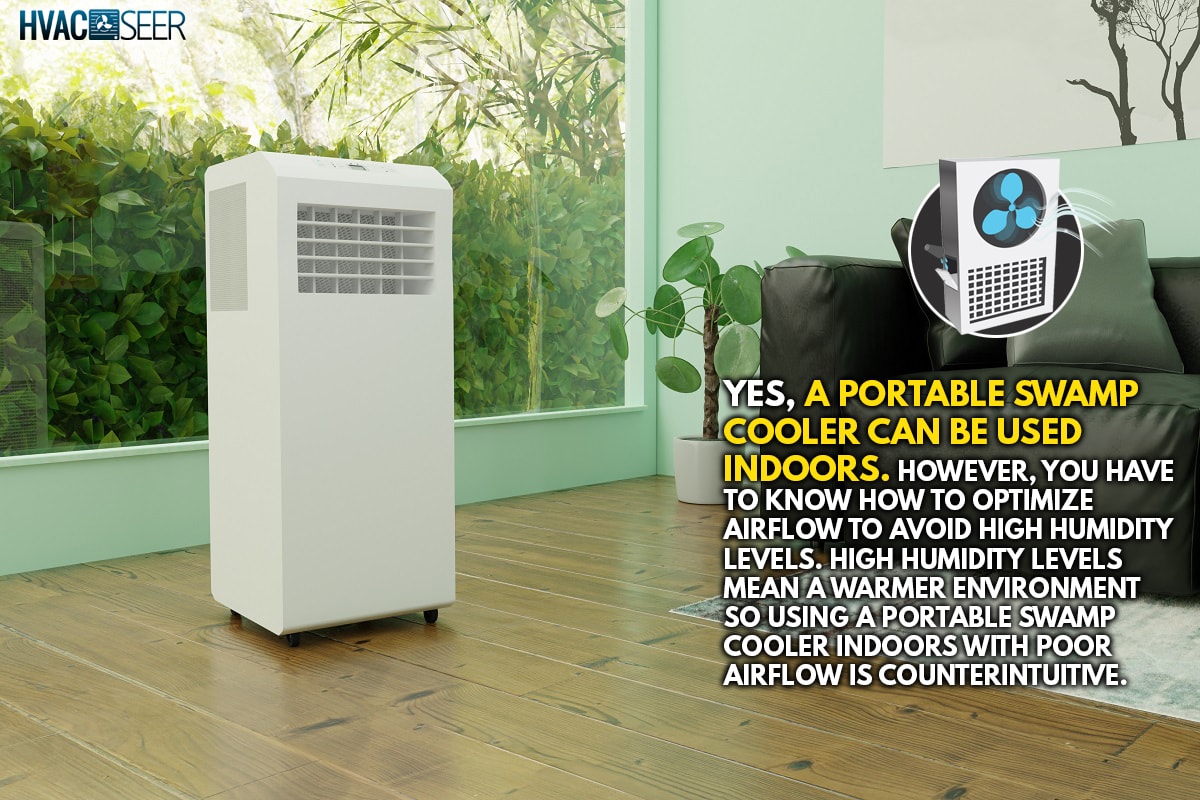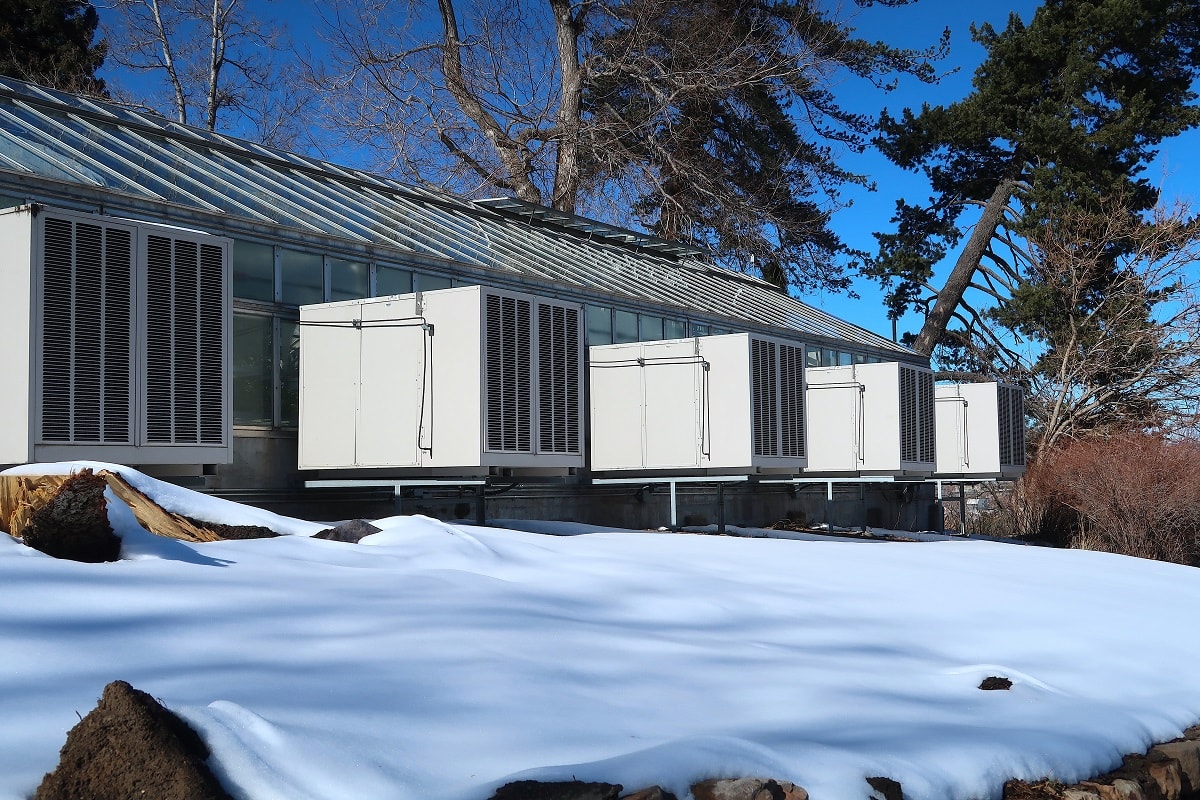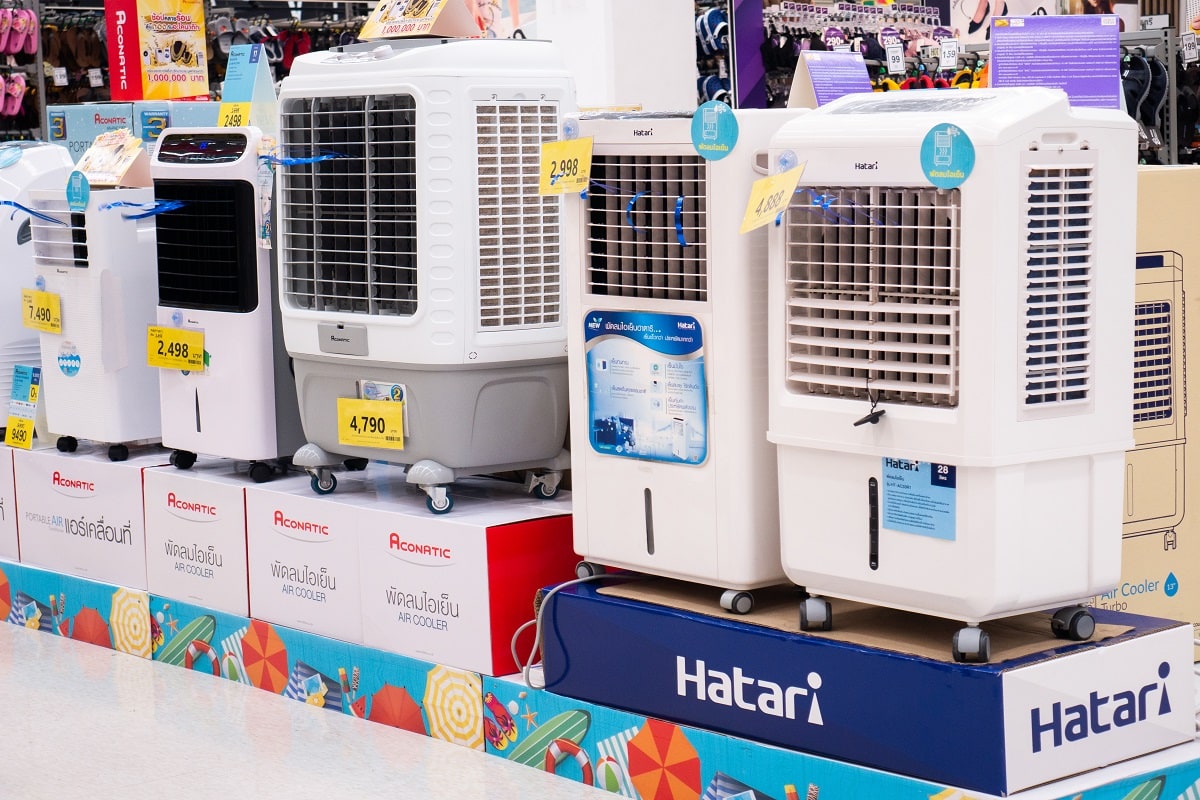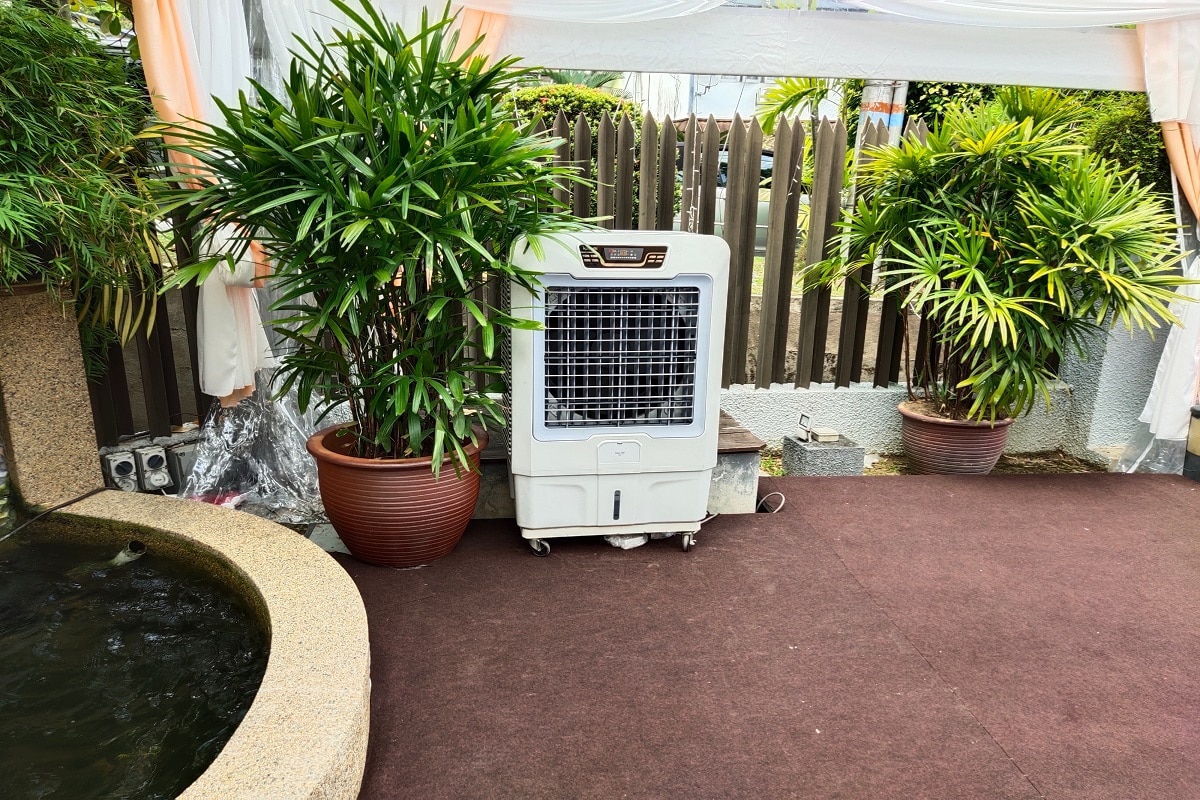Swamp coolers have become a staple in many outdoor settings. They are a great way to chill out while lying beside the pool on hot summer days. But can you use them indoors? We have researched the answer and here's what we found.
Yes, a portable swamp cooler can be used indoors. However, you have to know how to optimize airflow to avoid high humidity levels. High humidity levels mean a warmer environment so using a portable swamp cooler indoors with poor airflow is counterintuitive.
Swamp coolers are a great way to cool air when you don't have access to a natural breeze, but they're not the best way to keep the air in a room cool when there is inadequate ventilation. In this article, we'll explain the fundamentals of swamp coolers, and why they're better suited to a well-ventilated area. Keep reading to learn more!

How Does Swamp Cooler Work?
Swamp coolers work differently from traditional cooling systems, but the results are somewhat the same.
Traditional cooling systems require a compound that serves as a catalyst, like a refrigerant, to create a large temperature differential between the air inside the room and the air outside.
In order for your air conditioning system to absorb heat from the air, it has to convert refrigerant into a gaseous state. This causes a significant drop in the refrigerant's temperature, resulting in cool air.
Swamp coolers operate on a completely different principle, although it works similarly to airconditioners by absorbing heat from the air.
Instead of using refrigerant, swamp coolers use water as a catalyst to initialize a reaction between the hot air absorbed and the moistened pads inside the cooler.
This reaction creates steam and water vapor, which is then released into the room to evaporate and cool the air.
How To Improve Airflow Efficiency To Maximize Swamp Cooler Potential

A swamp cooler is a wonderful way to cool off your home, but it's only as effective as the airflow in its surrounding area.
If you're planning to install one in your home, make sure you have a thorough understanding of the airflow. Otherwise, you could end up with an inefficient cooling unit.
In order to maximize the performance of your swamp cooler, here are some things you can do:
1. Make Sure The Filter Pads Are Fully Wet
The filter pads catch heat from the air they absorb and cool them off through the process of evaporation.
The water in the pads absorbs the heat from the air and converts it into water vapor. The air is then cooled by the water vapor as it passes over the pad, which causes the temperature of the air to drop.
One of the most common problems why swamp coolers fall short of efficiency is the fact that the pads are not fully wet. They may still be able to absorb all the heat from the air, but they don't have enough water to dissipate the heat through evaporation.
As a result, the swamp coolers are not able to cool as well as they should. You can avoid this problem by keeping the pads completely moist by running the pump for a maximum of 10 minutes.
2. Test The Airflow
Testing your airflow doesn't need any fancy equipment. Simply grab a tissue and try to place it on the window. If it sticks, it means you have adequate relief air.
Relief air replaces the hot air that is being displaced inside the living space by the swamp cooler. If the tissue doesn't stick to the window, that means there's not enough moisture on the window. If it doesn't stick, then you can adjust the window opening.
Not enough moisture means either the swamp cooler is not efficiently working to provide the necessary cooling or the airflow is not optimized to achieve the desired temperature.
3. Check Humidity With Thermostat
Swamp coolers can be great for cooling down a room in summer, but they can cause your room to become clammy. It's true that you can't avoid humidity, but a swamp cooler can bring it in in droves!
This is why swamp coolers are designed to work in conjunction with a good ventilation system and a thermostat.
To ensure humidity is kept at a tolerable level, you need to have a constant supply of fresh air moving through the room. The ideal ventilation system will use a fan to pull fresh air into the room and will use an exhaust system to push stale air out.
The video below will help explain this in greater clarity:
How To Use A Swamp Cooler?
It's not complicated to operate a swamp cooler as it's basically a plug-and-play device. Here are the steps:
- Locate the water reservoir and make sure it has enough water.
- Place the cooler in a place where airflow is freely moving in and out.
- Run the cooler for a few minutes to dampen the filter pads. Alternatively, you can manually remove the pads and prime the pads with water.
What Is The Main Difference Between An Air Conditioner And A Swamp Cooler?

Swamp coolers are typically placed near a window or in the corner of a door where there is the best air circulation. You can place an air conditioner anywhere and even in enclosed spaces.
This is because swamp coolers use the method of evaporative cooling to cool the air in your home, so you'll need to put them in places where airflow is optimal. Otherwise, your space will become stuffy.
When water vapor travels, it leaves behind traces of moisture in its path and can find its way to your windows and walls. This is called condensation. Evaporation in and of itself is not bad. What's bad is the moisture that is left behind.
Moisture, when it's found in the wrong places, can be very uncomfortable for people living in these spaces. Your living space will literally turn into a swamp if you use swamp coolers without efficient airflow. This is how swamp coolers got the name.
On the other hand, a traditional air conditioner has a built-in mechanism that naturally dehumidifies your living space.
Is A Swamp Cooler A Better Alternative Than Air Conditioner?
A swamp cooler can be a great alternative to air conditioning in a home. The beauty of the device is that it's more energy-efficient than traditional air conditioning systems.
The only drawback is that you have to ensure continuous air circulation in the area where it is placed.
Further, air conditioners use refrigerant, which is known to be one of the major contributors to ozone damage. If you're looking for an alternative air cooling system that is eco-friendly, a swamp cooler may be your best bet.
Check out this evaporative cooler on Amazon.
Which States In the United States Do Swamp Coolers Work Most Efficiently?
If you live in one of the following states, you'll get a lot of cooling for your money!
- Texas
- California
- Arizona
- New Mexico
- Colorado
- Utah
What Is The Average Lifespan Of A Swamp Cooler?
The life expectancy of a swamp cooler, just like any machine or equipment, depends on the maintenance of the system.
It's easy to leave a swamp cooler running all day long, but it takes proper upkeep to ensure it lasts as long as possible. With proper use and regular routine checkups, swamp coolers are expected to last five years.
How Much Water Does A Swamp Cooler Use?
Swamp coolers have become a popular choice for many people, especially those who live in the tropics. They are a simple, inexpensive option for cooling an entire house. However, do they really use a lot of water?
A portable swamp cooler can consume 25.36 gallons of water in a full 24-hour operation, while a central swamp cooler system can use up to 158.5 gallons.
It may seem like a lot of money is going down the drain with these crazy amounts of water, but swamp coolers are still the bang for the buck in terms of energy cost if you compare it to how much you'll pay for central air conditioning systems.

How Cost-Effective Is Running A Swamp Cooler Per Month?
A swamp cooler operating at 24-hour full capacity will cost you a measly $2. That's about $60 per month. On the other hand, a central air conditioning unit will cost you $270 more.
Is It Possible To Run A Swamp Cooler Without Water?
You can run a swamp cooler without water, but that means only the fan is going to blow hot air into your space.
Swamp coolers are designed to work with water to cool air, so if you simply just want to run your swamp cooler because you want to test how much cooling effect its fan can produce, then you won't feel any significant change in the temperature.

How Safe Are Portable Swamp Coolers?
Swamp coolers are considered safer than traditional air conditioners. When you use a swamp cooler, it doesn't emit CFCs, unlike the refrigerants used in air conditioners. Instead, it produces humidity and takes advantage of natural air currents.
However, there are still plenty of situations where a portable swamp cooler can become a safety hazard. For instance, if you have a child in the house, the child could accidentally knock over the unit and cause it to malfunction.
Also, if the unit is leaking water after being knocked out of position, it could cause an electric shock if the water flows through the wire and into the electrical outlet.
In Closing
When you set up a portable swamp cooler for indoor use, you'll want to pay close attention to the airflow and ensure proper humidity control. A swamp cooler is not effective for interior use by design, as it can cause humidity levels to rise.
The key to making a swamp cooler work for you is ensuring there is enough airflow to effectively cool the room. If not, you will notice your dehumidifier will kick in to compensate.
You might also like:

